8 Not-So-Obvious Ways Alcohol Is Hurting Your Health
Feeling down, tired, or broke after having a few drinks? Here’s how alcohol can affect your quality of life, beyond raising the risk for chronic disease.
Updated on March 20, 2023
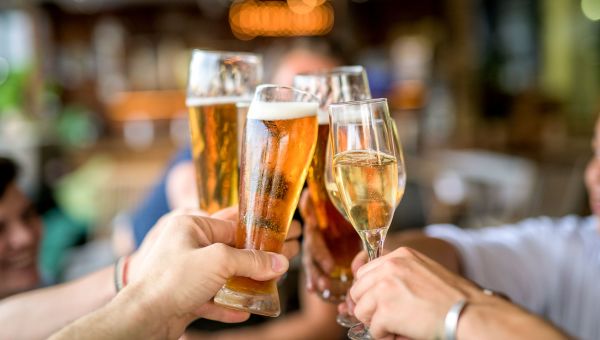
Have you ever felt overly tired or a little flushed after having a few drinks? Have you spent more money than you intended, or done things you regret after a night out drinking with friends? Is your daily glass of wine interfering with your weight loss goals? If you can answer yes to any of these questions, you’re not alone.
Drinking can influence your health in many different ways. Though it's often linked to chronic conditions, including increased cancer risk and raised blood pressure, it has other consequences that can greatly affect your physical and mental well-being, including the following.

It can alter your mood and judgment
When you drink, the communication pathways in your brain are disrupted, which can affect your mood and behavior along with your coordination and judgment. Though having a glass of wine or a beer may make you feel relaxed, warm, and happy, as soon as you start drinking, your judgment is affected. You may do and say things you wouldn't normally do or say. With lower inhibitions, you may also be tempted to drink more than you initially intended.
If you keep drinking, you’ll probably get sleepy. If you have too much alcohol, you might even pass out, start slurring your words or have trouble walking. That’s because alcohol depresses the system that keeps us awake and alert.
“Most people use alcohol as a way of relaxing and breaking down social barriers. In medicine we refer to this as disinhibition, which in some cases can be a good thing. It can enable people to talk to each other and be more honest about things,” says Keith Roach, MD, associate professor in clinical medicine in the division of general medicine at Weill Cornell Medical College and New York-Presbyterian Hospital. “Unfortunately, many people are using alcohol to self-medicate for underlying mental health disorders.”
Drinking to cope with anxiety or symptoms of depression can backfire. Over time, chronic alcohol abuse could contribute to mental health conditions like depression.
For those already taking antidepressant medications, drinking alcohol can be particularly dangerous. When mixed with antidepressants, alcohol’s effects may be heightened, resulting in even more drowsiness, dizziness, coordination issues, and decreased alertness. The combination of alcohol and certain antidepressants could also prevent these medications from working as they should, allowing symptoms of depression or anxiety to worsen.
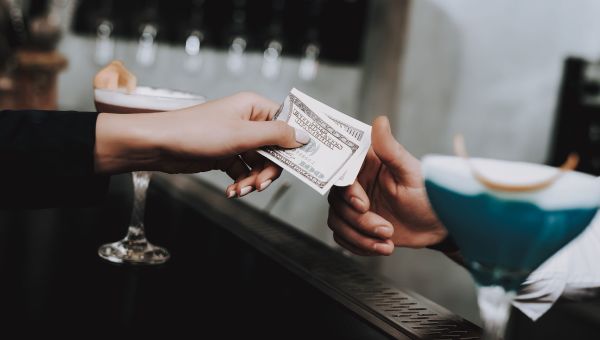
It’s a financial drain
From wine to beer and everything in between, alcohol costs money. While prices vary from state to state, you can often pay $8 or $9 for a six-pack of light, domestic beer or at least $10 for a bottle of wine. If you’re ordering drinks at a restaurant or buying top shelf liquor, strong craft beers, or fine wines in a store, you should expect to pay much more than that. The more you drink, the more you’re spending.
There are some other steep, less obvious costs associated with alcohol use. Drinking can lead to missed workdays and less productivity due to hangovers. There is also a financial toll associated with alcohol-related injuries, trips to the emergency department, and car accidents. Over time, these expenses can add up. In fact, heavy alcohol use, including binge drinking (for men, having five or more drinks in one sitting, four for women), costs the United States over $200 billion every year to cover unintended things like missed work, car accidents, healthcare expenses, and more.
If you want to assess how much you or your family is spending on alcohol over time, consider using the University of Rochester's Cost of Drinking Calculator. You can also track your alcohol intake with the Sharecare app (available for iOS and Android).
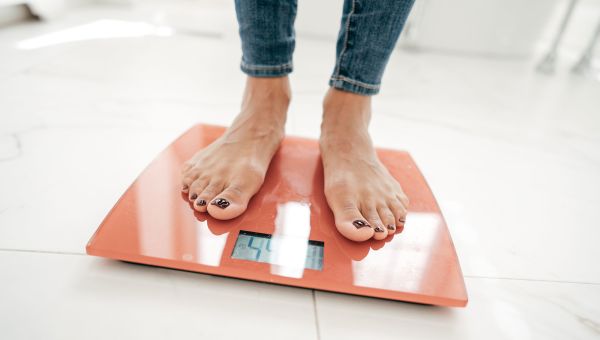
It can lead to weight gain
Every day in the U.S., the typical adult ingests an average of nearly 100 calories from alcoholic beverages, reports the Centers for Disease Control and Prevention (CDC).
Some drinks, such as strawberry daiquiris, may be more obviously high in calories. But you may be surprised to learn that your nightly glass of wine may be tacking on more calories to your healthy eating plan than you realize. It’s also important to understand that calories from alcohol are “empty,” Dr. Roach explains. Empty calories, he warns, don’t have nutritional value and they don’t help you feel full or satisfied, which can lead to weight gain.
Calories also increase based on alcohol content, so a stronger beer or wine will have more calories. Many darker ales and stouts have a lot more calories than a light white wine. For example, a 12-ounce lager contains 150 calories on average, while a 5-ounce glass of sauvignon blanc has about 100.
This is another important reason why portion control is key. You should be particularly mindful of how much you’re actually drinking, especially while you’re dining out. One beverage at a restaurant could be as much as two servings and can include extra calories from add-ins, like juices and soda.
If you’re trying to lose weight, it’s important to consider the calories you’re drinking—even if you’re only having one glass of wine each night. Over the course of one week, that’s more than 700 calories. Opting for something non-alcoholic and low-cal, such as seltzer, can make it easier to lose weight, Roach advises.
It’s also important to remember that if you’re drinking, you’re also more likely to opt for foods that are high in unhealthy fats and added sugars. Over time, these extra calories can add up. If you’re curious to learn how many alcoholic calories you’re consuming, the U.S. National Library of Medicine has an easy guide.
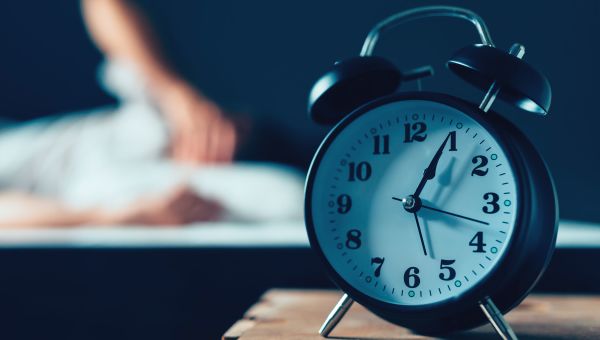
You might lose sleep
Alcohol can make you feel drowsy, but it isn’t a sleep aid. Drinking can actually have the opposite effect, resulting in disrupted, poor-quality sleep.
If you have a drink or two before bedtime, it could interfere with your natural body clock or circadian rhythm. Interfering with your normal sleep-wake cycle could cause you to wake up earlier than usual.
Drinking can also interrupt rapid eye movement (REM) sleep, which is the most restorative phase of sleep, Roach cautions. If your REM sleep is disrupted, you’re not going to feel as refreshed or sharp the next day, he explains.
Alcohol could affect your breathing, as well, since it relaxes your throat muscles. This can increase the risk of snoring and obstructive sleep apnea, a condition that interrupts your breathing when upper airway blockages interfere with airflow.
It’s important to remember that alcohol is a diuretic, too. So, if you’ve been drinking late in the day or in the evening, you’ll likely have to wake up and use the bathroom during the night.
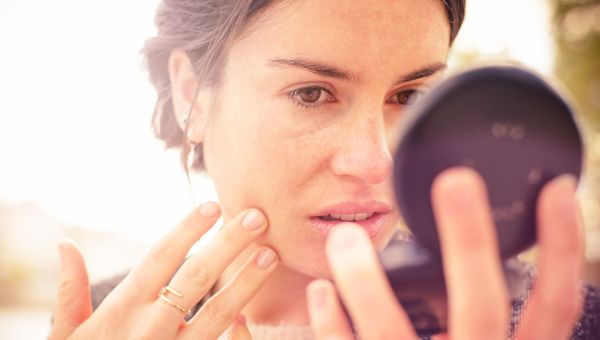
Your skin may suffer
Drinking could increase your risk of certain skin problems, such as rosacea—a condition that can cause flushing, breakouts, irritation, and swelling. Skin issues can arise if you drink alcohol, even if you haven’t had to cope with them before.
A large 2017 study published in the Journal of the American Academy of Dermatology found that alcohol, specifically white wine and liquor, was associated with an increased risk of rosacea in women. While the study’s authors admitted that more research is needed to explain the link, they speculated that alcohol may contribute to rosacea by weakening the immune system and widening blood vessels.
As you drink, an enzyme called aldehyde dehydrogenase helps the liver break down alcohol. If you’re lacking this enzyme, toxins from the alcohol can build up within your body. This can cause your face to become flushed and encourage enlargement and dilation of your blood vessels, which can make you sweat. The enzyme deficiency is most common among those of East Asian descent.
Other research suggests there’s a link between excessive alcohol consumption and psoriasis. Alcohol prevents the immune system from functioning properly, which could lead to an increase in inflammation, infection, and the growth of skin cells.
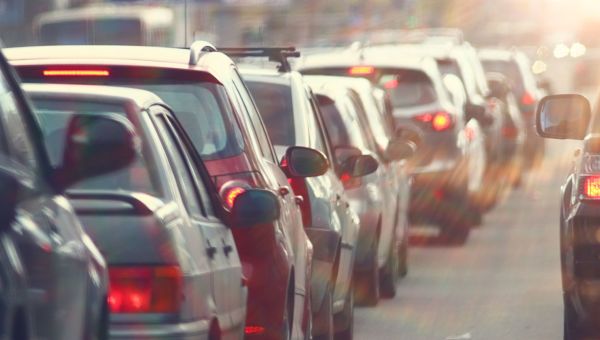
You’re more likely to get hurt (or hurt others)
Excessive alcohol use led to approximately 140,000 deaths each year between 2015 and 2019 shortening the lives of those who died by an average of 26 years. Excessive drinking is a leading cause of preventable death in the U.S. According to the CDC, one in five deaths among adults aged 20 to 49 is due to excessive alcohol use.
As you drink, the amount of alcohol in your system increases, which raises your blood alcohol concentration level. Alcohol is absorbed quickly by your body; it can start to have an effect within 10 minutes.
“Alcohol is one of the few substances that can get absorbed through the stomach,” Roach explains. “From the stomach it goes right into your bloodstream to your liver and then to your brain, which is the main area that we're concerned about having adverse effects.”
Even one or two drinks will have almost immediate effects on your judgment. The more alcohol you consume, the more your coordination, balance and decision-making skills will be affected.
“Your muscle coordination becomes impaired with even moderate amounts of alcohol," Roach says. “And judgment impairment can occur even before motor impairment does.” That means it’s likely—even with one or two glasses of wine—you’re okay physically, but you might take risks you wouldn’t usually take, he adds.
Binge drinking is especially risky, making you much more likely to suffer a serious or fatal injury, such as falling, getting burned, drowning, or being involved in a car accident, according to the CDC.
Each day in the U.S., 32 people die in car crashes that involve a drunk driver—that’s one death every 45 minutes. In 2020, alcohol was responsible for 30 percent of all traffic fatalities.
Drinking alcohol also increases the likelihood that you’ll engage in risky sexual behaviors like unprotected sex, or sex with multiple partners, which can have serious and lasting health implications.
You’re more likely to become involved in violent situations if you’ve been drinking, as well, including intimate partner violence like rape or verbal and physical abuse. In fact, more than half of all violent sexual crimes involve alcohol consumption by one or more involved.
Bottom line: Drinking not only puts your health at risk but also the wellbeing and safety of others. Two national surveys, involving 8,750 U.S. adults, found that about 21 percent of women and nearly 23 percent of men are hurt by the alcohol intake of another person each year. In other words, the study’s authors pointed out, some 53 million adults suffer “secondhand effects of alcohol” annually. The findings, published online in June 2019 in the Journal of Studies on Alcohol and Drugs, revealed these indirect harms include harassment, vandalism, physical aggression, car accidents, and financial strain.
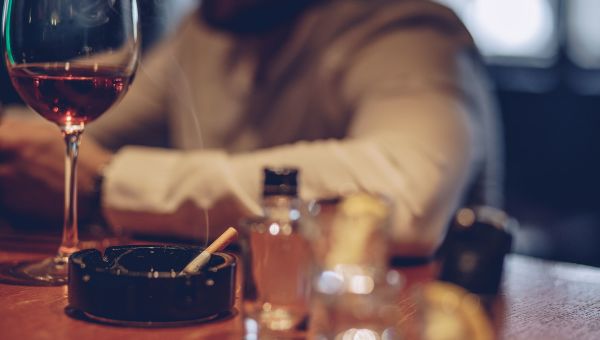
You’re more likely to smoke
Smoking and drinking often go hand in hand, and the correlation between alcohol and nicotine use is not all that surprising, according to Roach. “Unhealthy behaviors like to covary,” Roach says. Simply put, drinking is a risk factor for smoking and smoking is a risk factor for drinking.
On the flip side however, tackling one of these issues could lead to more positive lifestyle changes. “Sometimes, all it takes is one discrete change in behavior, like cutting down on drinking for others to follow,” he points out.
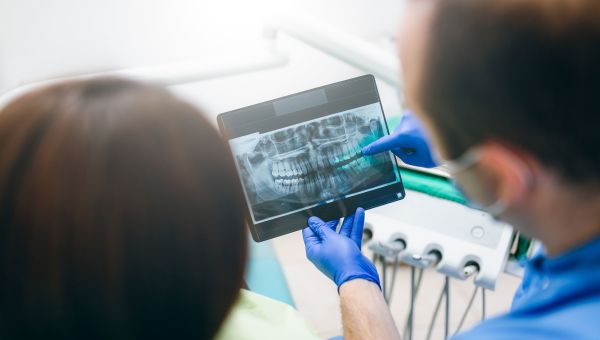
You may spend more time at the dentist
Alcohol can increase your risk for certain head and neck cancers, including forms of the disease that affect the mouth, throat, and voice box. The more you drink, the higher your risks. But drinking has other short-term consequences for your oral health.
One of the most immediate effects is dry mouth. Alcohol causes your salivary glands to produce less saliva. Aside from the discomfort associated with dry mouth, the condition can lead to bad breath and a sore tongue or throat. You may also have trouble swallowing, speaking, or chewing. Over time, dry mouth can increase your risk for tooth decay and gum disease.
Heavy drinkers, in particular, have an increased risk of developing a serious gum infection, called periodontitis, which can damage the gums and jawbone.
A 2017 study published in the Journal of Clinical Diagnostics and Research of 152 adults, with an average age of 35, found those who were dependent on alcohol had a higher risk for tooth decay, periodontitis, and mouth sores than the nonalcoholic control group. These findings built on research published in 2015 in the Journal of Periodontology, which found that adults who drank heavily had higher levels of certain types of bacteria that cause periodontitis.
Over time, acidic alcoholic drinks, like wine, can also lead to cavities and the erosion of tooth enamel, which make teeth more susceptible to damage.

Rethinking your alcohol intake
Keep in mind: Alcohol’s health effects vary from one person to the next. The way it will affect you depends on some individual risk factors, including your DNA, lifestyle, age, health, and family medical history. It also depends on how much you drink. If you don’t drink already, it’s best not to start. If you do choose to drink, stick to the recommended daily limits to minimize your risk for alcohol-related health issues. That’s no more than two drinks per day for men or one per day for women.
If you’re concerned about how much you drink and want to curb your alcohol intake, here are some strategies that could help:
- Try a new activity: If you’re getting together with friends, avoid going to a bar. Consider some alternative activities that may help you avoid the temptation to drink, such as taking a hike or seeing a movie.
- Steer clear of triggers: If certain people encourage you to drink, or if being in a specific environment triggers you to toss a few back, try surrounding yourself with positive influences. It’s also a good idea to avoid the places that remind you of drinking.
- Learn to say no: It can be easy to give in when someone offers you a drink but stick to your resolution. If you’re trying to abstain, respond quickly with a clear and simple “no, thanks” and, if possible, avoid eye contact.
- Be prepared for urges: There may be moments when you want to drink. If you feel tempted to break your resolution, it could help to remind yourself about why you want to cut back. You could even write your intentions down on paper and store this note in your purse or wallet. You can also discuss your feelings with a loved one or pick up a new hobby that will help distract you until your desire to drink passes.
If you recognize the signs of binge drinking, heavy alcohol use, or alcohol use disorder, it’s important to seek help from your doctor or another trained healthcare professional. You can also contact the Substance Abuse and Mental Health Services Administration National Helpline at 1-800-662-HELP for treatment facilities and support groups and other resources that are available in your area.

Brooks PJ, Enoch MA, et al. The alcohol flushing response: an unrecognized risk factor for esophageal cancer from alcohol consumption. PLoS Med. 2009 Mar 24;6(3):e50.
Centers for Disease Control and Prevention. Alcohol and Public Health: Data on excessive drinking. Page last reviewed November 28, 2022.
Centers for Disease Control and Prevention. Alcohol and Public Health: Deaths from excessive alcohol use in the United States. Page last reviewed July 6, 2022.
Centers for Disease Control and Prevention. Alcohol and Public Health: Alcohol use and your health. Page last reviewed April 14, 2022.
Centers for Disease Control and Prevention. Calories Consumed From Alcoholic Beverages by U.S. Adults, 2007-2010. Page last reviewed November 6, 2015.
Centers for Disease Control and Prevention. Transportation Safety: Impaired driving. Page last reviewed December 28, 2022.
Falk DE, Yi HY, et al. An epidemiologic analysis of co-occurring alcohol and tobacco use and disorders: findings from the National Epidemiologic Survey on Alcohol and Related Conditions. Alcohol Res Health. 2006;29(3):162-71.
Lages EJ, Costa FO, et al. Alcohol consumption and periodontitis: quantification of periodontal pathogens and cytokines. J Periodontol. 2015 Sep;86(9):1058-68.
Li S, Cho E, et al. Alcohol intake and risk of rosacea in US women. J Am Acad Dermatol. 2017 Jun;76(6):1061-1067.e2.
MedlinePlus: Dry mouth. Page last reviewed May 3, 2021.
National Highway Traffic Safety Administration. Drunk Driving. Accessed on February 24, 2023.
National Institute on Alcohol Abuse and Alcoholism. Alcohol medication interactions: potentially dangerous mixes. Page last revised May 6, 2022.
National Institute on Alcohol Abuse and Alcoholism. Rethinking Drinking. Strategies for cutting down: tips to try. Accessed on February 27, 2023.
National Institute on Alcohol Abuse and Alcoholism. Rethinking Drinking. Tools: Worksheets and more: handling urges to drink. Accessed on February 27, 2023.National Library of Medicine.
National Library of Medicine. MedlinePlus: Weight loss and alcohol. Page last reviewed June 22, 2022.
Nayak MB, Patterson D, Wilsnack SC, et al. Alcohol's secondhand harms in the United States: new data on prevalence and risk factors. J Stud Alcohol Drugs. 2019 May;80(3):273-281.
NIH: National Institute on Alcohol Abuse and Alcoholism. Alcohol’s Effects on the Body. Accessed March 20, 2023.
NIH: National Institute on Alcohol Abuse and Alcoholism. Genetics of Alcohol Use Disorder. Accessed March 20, 2023.
Priyanka K, Sudhir KM, et al. Impact of alcohol dependency on oral health - a cross-sectional comparative study. J Clin Diagn Res. 2017 Jun;11(6):ZC43-ZC46.
Sawada Y, Saito-Sasaki N, et al. Daily lifestyle and inflammatory skin diseases. Int J Mol Sci. 2021 May 14;22(10):5204.
Sleep Foundation. Nutrition and Sleep: Alcohol and sleep. Page last reviewed February 8, 2023.
National Library of Medicine. MedlinePlus: Alcohol use and safe drinking. Page last reviewed April 30, 2022.
Tkacz K, Gill J, McLernon M. Necrotising periodontal diseases and alcohol misuse - a cause of osteonecrosis?. BDJ Team 8, 30–37 (2021).
More On


video

article


video


video

article
